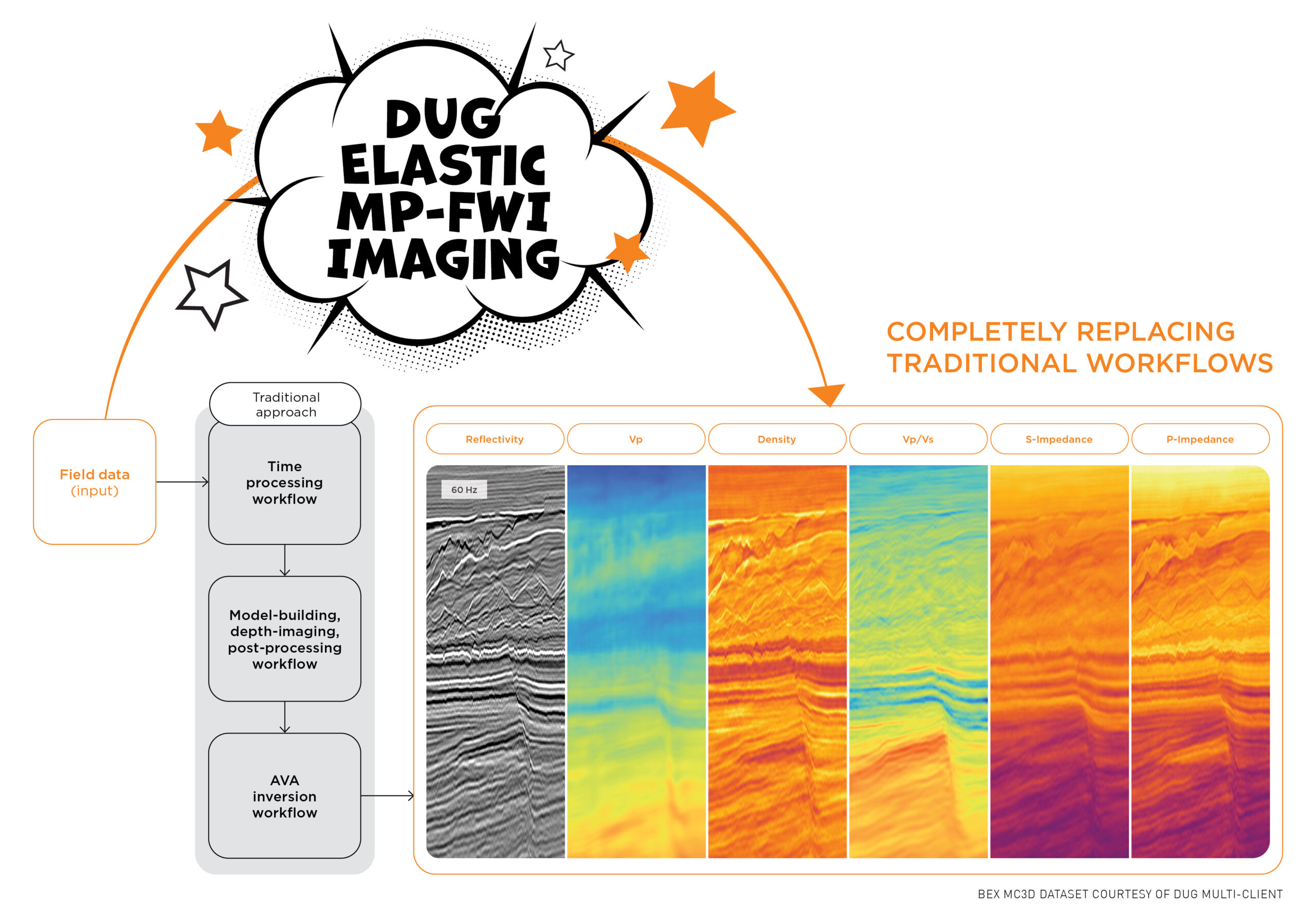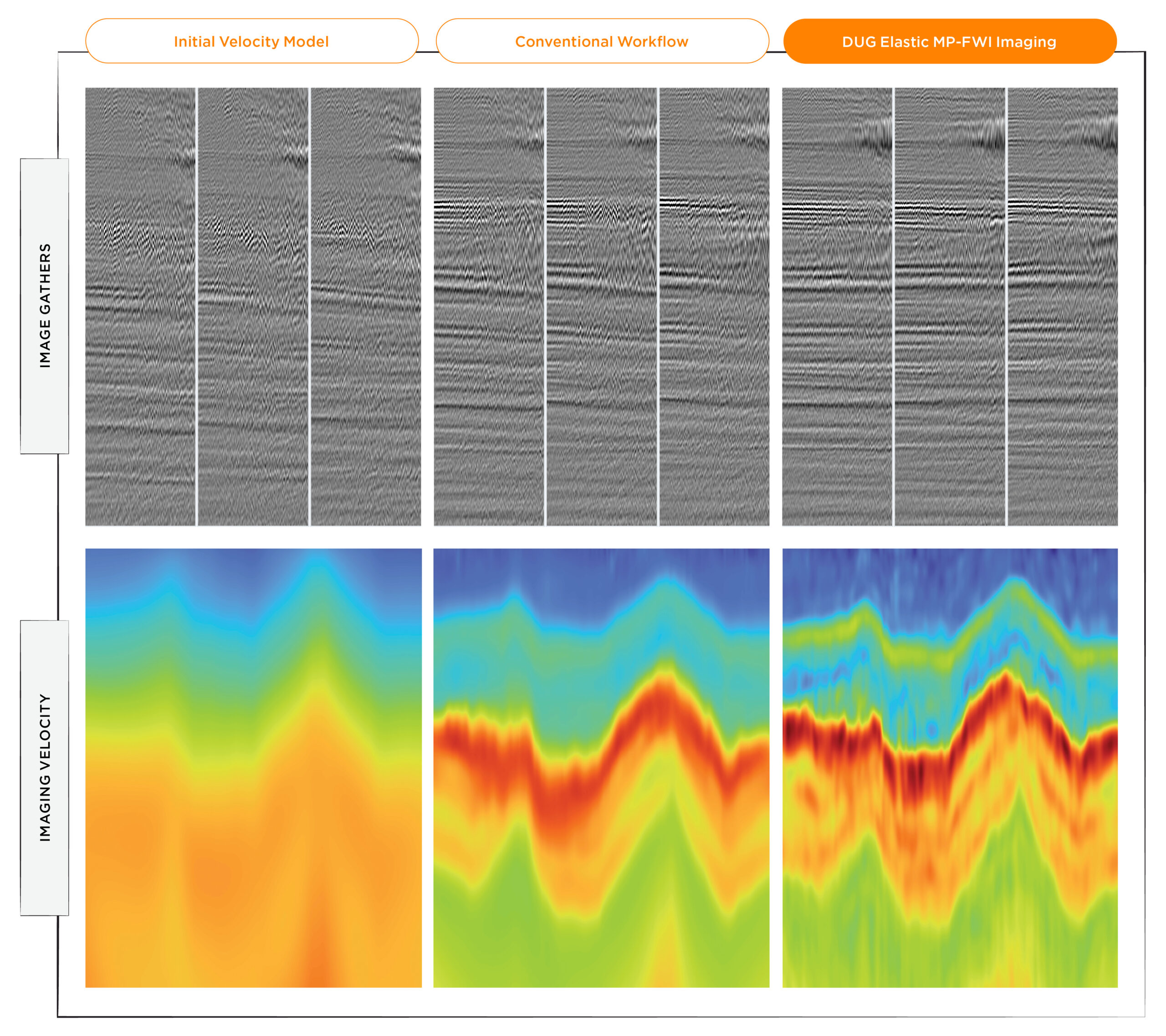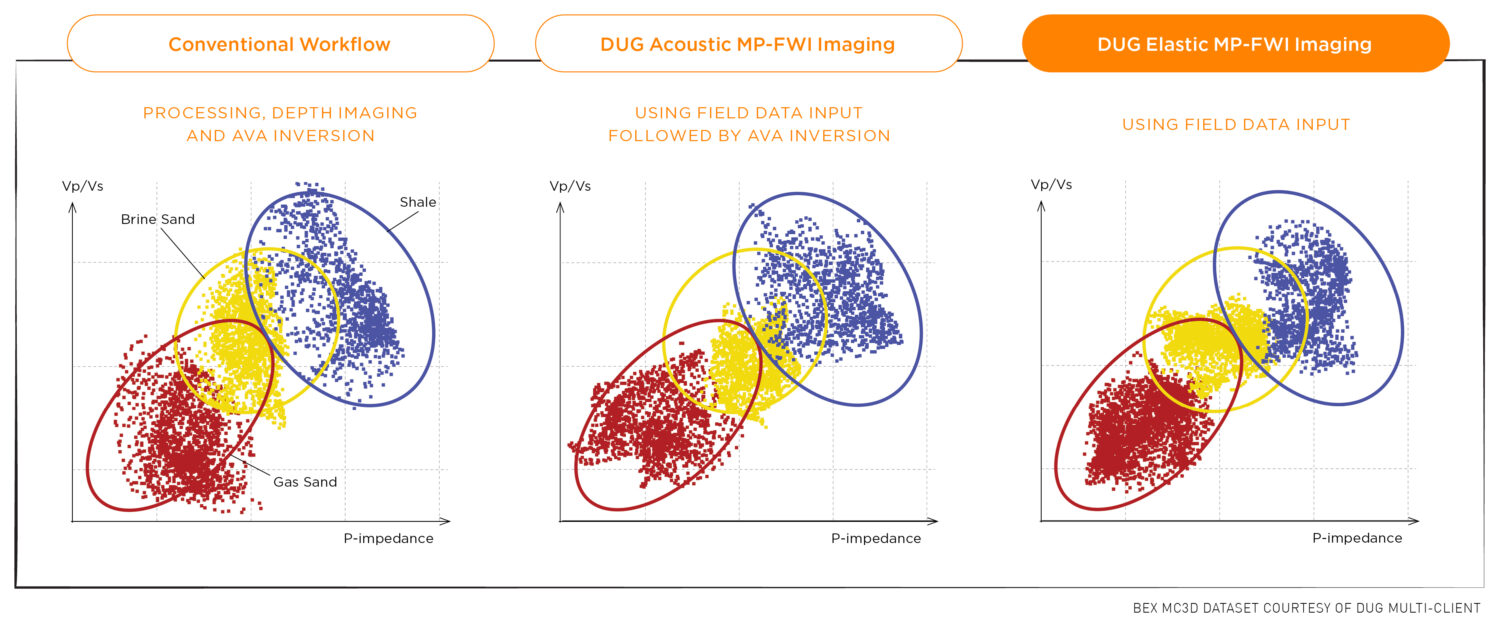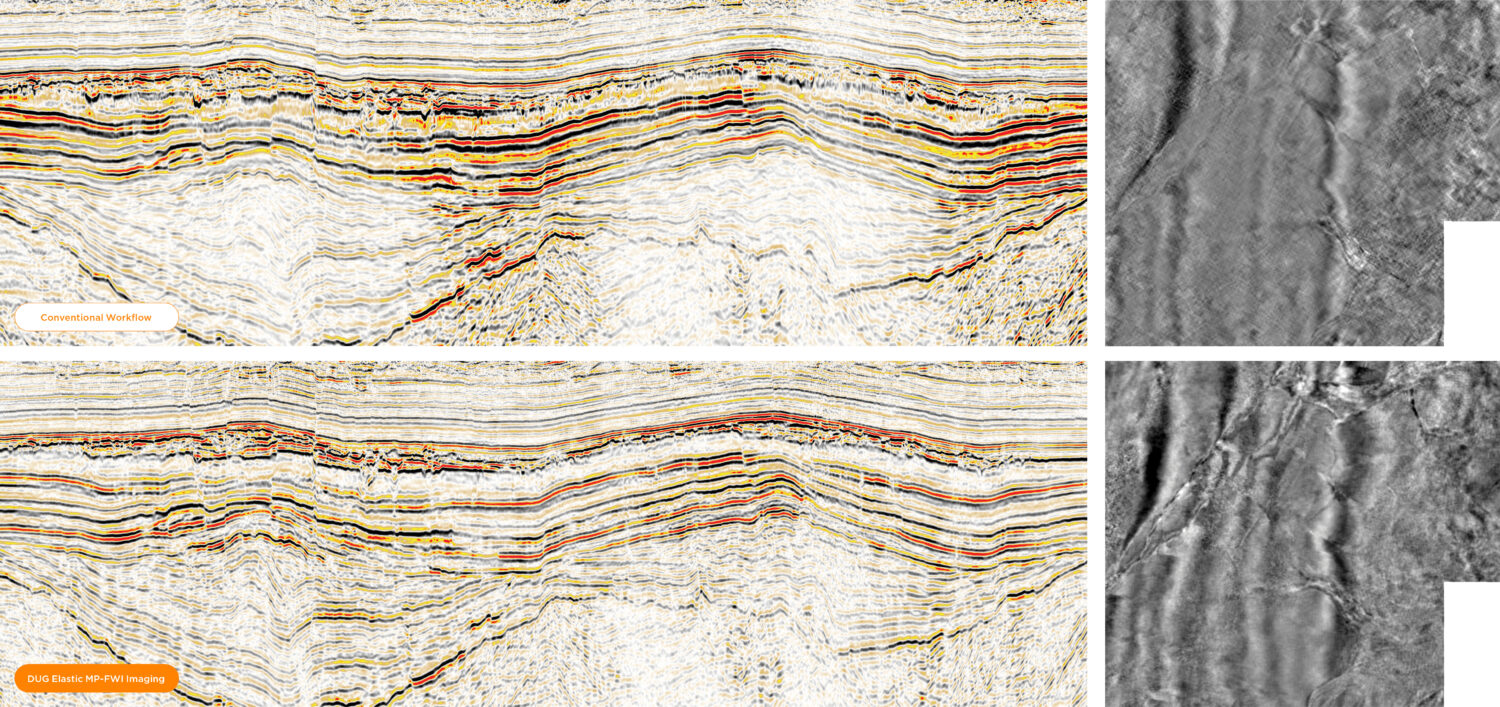The Earth is inherently elastic. As data processing has advanced to better honour physics, we have continually refined our ability to understand the subsurface. Land seismic data, such as the example above, can often exhibit strong elastic effects that violate the assumptions of acoustic imaging.
The traditional processing workflow involves the testing and application of dozens of steps such as deghosting, designature, demultiple and regularisation, which are all designed to overcome the limitations of conventional imaging. These workflows are complex, subjective, and very time-consuming due to their serial nature and they rely on many assumptions and simplifications. All of these issues impact the output data quality. The resulting, primary-only data then undergoes a similarly complex model-building workflow to derive an estimate of the subsurface velocity, which is used for depth imaging. Post-migration processing is performed before the pre-stack reflectivity undergoes another workflow to derive rock properties that feed into quantitative interpretation, also relying on simplifications of the actual physics. As a result of these workflows, projects can take many months to years to complete.

DUG Elastic MP-FWI Imaging is a unique approach to seismic processing and imaging which turns the traditional paradigm on its head. It replaces not only traditional processing and imaging workflows, but also the subsequent inversion workflow for elastic rock properties.
Elastic MP-FWI Imaging accounts for both compressional and shear waves, handling variations in seismic wave dynamics as a function of incidence angle, including in the presence of high impedance contrasts and onshore near-surface geological complexity. Multiples and converted waves are now treated as valuable additional signal, increasing sampling, resolution and constraining the inverted parameters.
Here, velocity model updates generated using a conventional workflow and DUG Elastic MP-FWI Imaging were evaluated using a Kirchhoff pre-stack depth migration (KpreSDM), using the fully pre-processed data as input.
The figure above compares common-offset-vector KpreSDM snail gathers using the initial velocity model (left), the conventionally derived velocity model (middle), and the DUG Elastic MP-FWI Imaging derived velocity model (right). The MP-FWI imaging velocity model demonstrates a clear and significant kinematic improvement (gather flatness) and a reduction of jitter due to the azimuthal variations, particularly around the high-impedance contrasts that result from the carbonates in this onshore desert setting.
A complete replacement for traditional processing and imaging workflows is no longer a stretch of the imagination. Visit dug.com to see more outstanding DUG Elastic MP-FWI Imaging results.
Get in touch
DUG Elastic MP-FWI Imaging leaps entire workflows in a single bound, delivering unsurpassed imaging and high-resolution rock properties from field-data input. Superior outputs, in a flash!
Talk to us today. Contact info@dug.com




